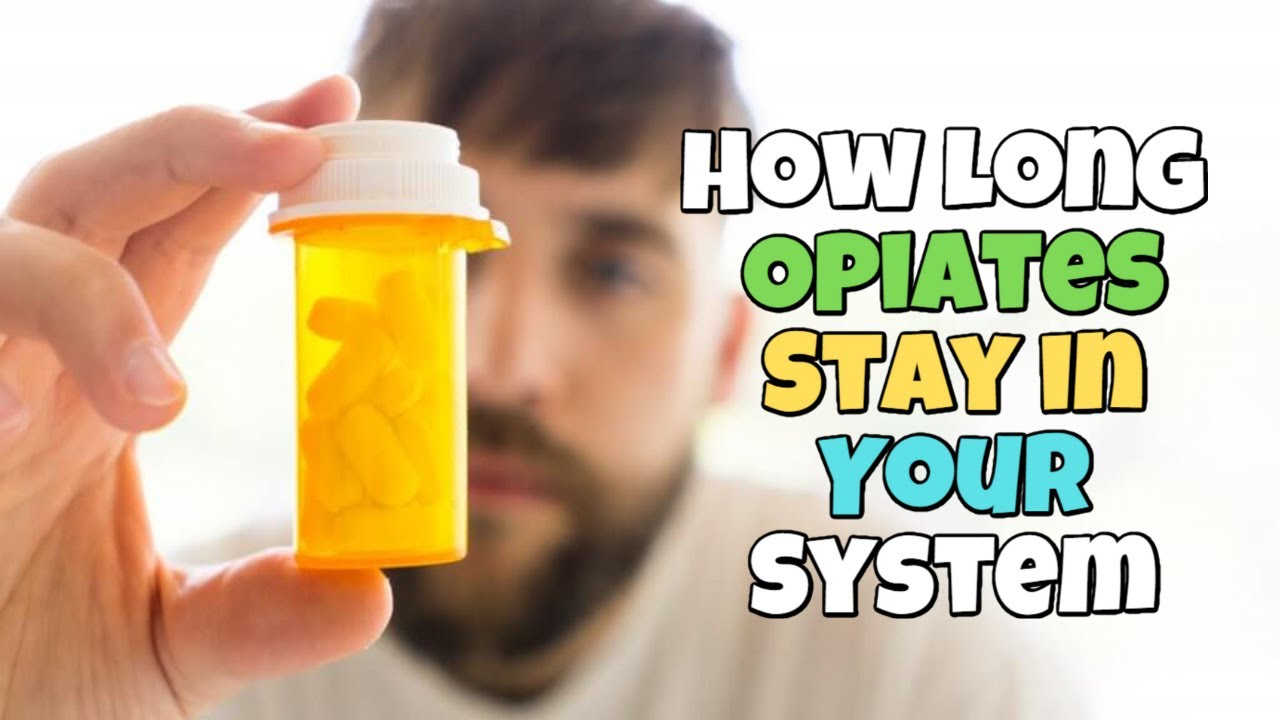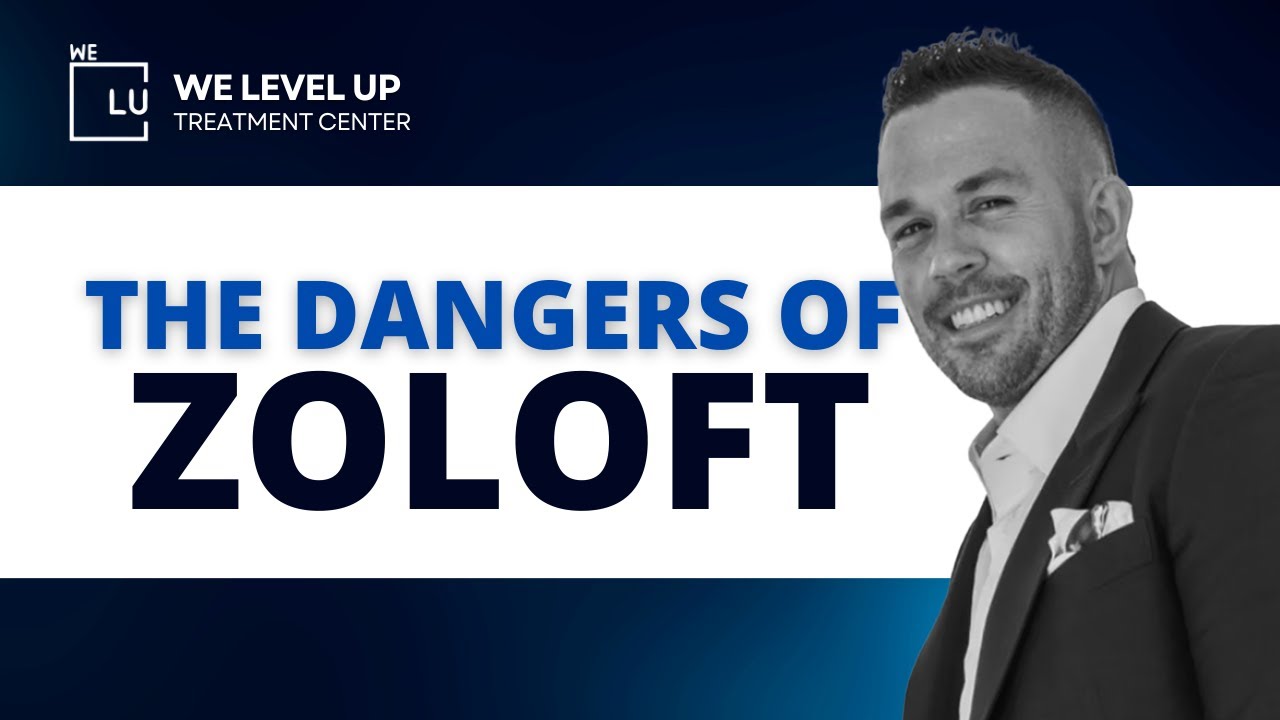What’s the Difference Between Oxycodone and Oxycontin?
Oxycodone vs Oxycontin are both types of analgesics, falling under the category of opiate or narcotic medications. These drugs can be directly derived from opiate substances extracted from the poppy plant or manufactured synthetically. Many of these commonly prescribed narcotic pain relievers are classified as Schedule II controlled substances by the U.S. Drug Enforcement Administration (DEA).
This classification acknowledges their substantial medicinal benefits and highlights their potential for abuse. Prolonged use or misuse of these substances can lead to physical dependence.
If you or someone you know is suffering from Oxycodone Vs Oxycontin substance abuse or withdrawals, the We Level Up Treatment Centers can help. Speak with our hotline specialists and discover the support and professional-accredited addiction treatment programs we offer.
What is OxyContin?
OxyContin, also known as Oxycodone Hydrochloride, is a prescribed opioid medication that alters the body’s perception and response to pain. Classified as a “controlled-release” drug, it gradually dispenses its active ingredient for prolonged pain relief.
OxyContin’s Uses
Primarily, OxyContin targets moderate to severe pain by modifying how the brain and nervous system react to pain signals. It’s beneficial in managing chronic symptoms like:
- Pain and related,
- Anxiety.
- Fatigue and sleep issues.
- Pain from knee replacements or severe pain from burns, fractures, etc.
OxyContin’s Side Effects
Commonly observed side effects of OxyContin encompass:
nausea, vomiting, constipation, drowsiness, and dry mouth. Additionally, severe effects might include respiratory depression, lowered blood pressure, breathing slowdowns, and the potential for addiction.
What is Oxycodone?
Oxycodone, another opioid prescribed by doctors, mirrors OxyContin’s pain-relief mechanisms but typically appears in shorter-acting forms like tablets, capsules, or liquid solutions.
Oxycodone’s Uses
Similar to OxyContin, Oxycodone tackles moderate to severe pain by altering how the body processes pain signals. It aids in managing anxiety, fatigue, and sleep difficulties related to chronic pain. Immediate-release and extended-release are the primary forms of Oxycodone, often employed when other pain medications are ineffective or not tolerated well enough. It is typically administered post-surgery, injury, or for specific medical conditions demanding opioid treatment.
Oxycodone’s Side Effects
Common side effects of Oxycodone echo those of OxyContin, including nausea, vomiting, constipation, drowsiness, and dry mouth. Serious effects, such as respiratory depression, low blood pressure, breathing slowdowns, and addiction, can also manifest.
Differences
OxyContin and oxycodone represent different formulations of the same opioid medication. Oxycodone serves as the active ingredient in various narcotic pain medications like Percocet, Percodan, and OxyContin. Specifically, OxyContin refers to the extended-release form of oxycodone.
Similarities
The resemblances between oxycodone and OxyContin are substantial, essentially denoting the same substance. The distinction is that oxycodone is a constituent in multiple pain medications (including OxyContin), while OxyContin presents as the time-release variant of oxycodone. This time-release mechanism allows for a gradual release of the drug in the body, reducing the frequency of its intake. Often, professional sources use OxyContin and oxycodone interchangeably due to their shared essence with this slight variation.

Skip To:
Learn More:
Mechanism of Action
Both OxyContin and oxycodone function by binding to specific receptors in the brain known as endogenous opioid receptors. These receptors naturally interact with neurotransmitters like endorphins and enkephalins, affecting perceptions of stress, pain, and anxiety. Synthetic narcotic drugs such as oxycodone and OxyContin attach readily to these receptors. While these substances are more potent than natural neurotransmitters, they elicit intensified experiences. Continued use of such drugs that produce pleasurable effects can activate dopamine, associated with feelings of satisfaction and pleasure, leading to a potential motivation for repeated use and the onset of substance use disorder.
Risk of Abuse and Dependence
Due to its time-release formulation and higher oxycodone concentration compared to non-time-release drugs, inappropriate use of OxyContin—like crushing and snorting it or consuming large amounts—may result in more potent effects and a higher likelihood of developing substance use disorders compared to other oxycodone-containing medications like Percocet. Both OxyContin and other oxycodone formulations share a DEA classification due to their substantial potential for abuse and physical dependence.
To expand on the risks of abuse and dependence related to OxyContin and other oxycodone-containing medications, it’s crucial to delve into several aspects.
- Pharmacological Effects and Risk Profile: OxyContin, a time-release form of oxycodone, presents a higher concentration of oxycodone per dose compared to immediate-release oxycodone formulations. This elevated concentration and time-release nature make it more prone to misuse. The higher dose and extended-release mechanism can lead to increased euphoria and reinforce the risk of dependency compared to medications with lower concentrations or immediate-release formulations.
- Misuse and Addiction Potential: When individuals misuse OxyContin by altering its form (such as crushing or snorting) to override the extended-release mechanism and experience a more intense and rapid high, the risk of addiction amplifies significantly. The intensified euphoria and quicker onset of effects reinforce the compulsive use of the drug, leading to physical dependence and addiction.
- Comparison with Other Oxycodone Formulations: Contrasting OxyContin with other oxycodone-based medications like Percocet, the extended-release nature of OxyContin increases the potential for abuse and addiction. The slower onset of effects and lower concentrations in immediate-release medications like Percocet might reduce their abuse liability compared to OxyContin. The DEA classification acknowledges the risk of abuse and dependence associated with both OxyContin and other oxycodone-containing medications.
- Impact on Public Health: The misuse of OxyContin and other oxycodone medications has been a significant contributor to the opioid crisis. The heightened potential for abuse and addiction, coupled with increased availability, has led to widespread misuse, addiction, and overdose deaths in many regions.
- Risk Mitigation and Management: Strategies to mitigate these risks involve proper prescription practices, patient education on the potential dangers of misuse, and the development of abuse-deterrent formulations. Healthcare providers play a crucial role in assessing patients for their risk of substance misuse and monitoring for signs of dependency during treatment.
Get Help. Get Better. Get Your Life Back.
Searching for Accredited Drug and Alcohol Rehab Centers Near You? We Level Up Texas Is Opening Soon!
Even if you have failed previously and relapsed, or are in the middle of a difficult crisis, we stand ready to support you. Our trusted behavioral health specialists will not give up on you. When you feel ready or just want someone to speak to about therapy alternatives to change your life call us. Even if we cannot assist you, we will lead you to wherever you can get support. There is no obligation. Call our network hotline today.
FREE Addiction Hotline – Call 24/7Side-by-Side Comparison of Oxycodone Vs Oxycontin Drug Features
immediate-release Oxycodone is typically used for short-term treatment of moderate to severe pain, such as post-surgery or injury. On the other hand, OxyContin, an extended-release form of Oxycodone, is mainly for the long-term management of chronic severe pain associated with advanced diseases like cancer. The table outlines their differences in forms, dosage, frequency, and storage requirements.
| Features | Immediate-release Oxycodone | OxyContin |
|---|---|---|
| Why is it used? | Treatment of moderate to severe pain, e.g., post-surgery or injury | Treatment of moderate to severe chronic pain associated with late-stage chronic diseases, typically cancer |
| Generic version available? | Yes | No |
| Brands | Oxaydo, Roxicodone | OxyContin |
| Forms | Immediate-release oral tablet, capsule, solution | Extended-release tablet |
| Capsule or tablet | Can be opened, cut, or crushed | Cannot be opened, cut, or crushed |
| Available strengths | Tablet: Generic – 5 mg, 10 mg, 15 mg, 20 mg, 30 mg; Roxicodone – 5 mg, 15 mg, 30 mg; Oxaydo – 5 mg, 7.5 mg; Capsule: 5 mg; Solution: 5 mg/5 mL, 100 mg/5 mL | Tablet: 10 mg, 15 mg, 20 mg, 30 mg, 40 mg, 60 mg, 80 mg |
| Dosage frequency | Every four to six hours | Every 12 hours |
| Long-term or short-term? | Short-term treatment (usually three days or fewer) | Long-term treatment |
| Storage | Store at a temperature between 68°F and 77°F (20°C and 25°C) | Store at a temperature between 68°F and 77°F (20°C and 25°C) |
A Comparison of Side Effects of Oxycontin vs Oxycodone
The similarity in side effects between OxyContin and Oxycodone can be attributed to the fact that they both contain the same active ingredient, oxycodone.
As opioid medications, OxyContin and Oxycodone work similarly in the body by binding to opioid receptors in the brain, spinal cord, and other areas. This binding action helps reduce pain perception while affecting various bodily functions.
Since both medications share oxycodone as the primary compound, their pharmacological action remains comparable, resulting in similar side effects. The most common side effects associated with opioids, such as drowsiness, dizziness, nausea, constipation, and potential dependency, are exhibited by both OxyContin and Oxycodone due to their similar mechanisms of action.
| Side Effects | OxyContin | Oxycodone |
|---|---|---|
| Drowsiness | Common | Common |
| Dizziness | Common | Common |
| Nausea | Common | Common |
| Vomiting | Common | Common |
| Constipation | Common | Common |
| Headache | Common | Common |
| Sleep disturbances | Common | Common |
| Itching | Common | Common |
| Sweating | Common | Common |
| Respiratory depression | Rare | Rare |
| Dependency | Possible | Possible |
| Constipation | Common | Common |

Get Your Life Back
Find Hope & Recovery. Get Safe Comfortable Detox, Addiction Rehab & Dual Diagnosis High-Quality Care.
FREE Addiction Hotline – Call 24/7Immediate Effects of OxyContin or Oxycodone Use
- Sensations of euphoria.
- Feelings of relaxation.
- Significant reductions in the perception of pain.
- Notable reductions in anxiety.
- Increased sedation.
Common Side Effects of OxyContin or Oxycodone Use
- Gastrointestinal issues: nausea, stomach cramps, vomiting, and constipation.
- Drowsiness, flushing, sweating, dry mouth, and loss of appetite.
- Weakness, headaches, and dizziness.
- Allergic reactions include hives, itching, rash, and swelling of the face, throat, tongue, lips, or extremities.
- Respiratory problems, usually decreased breathing but potentially serious issues including difficulty swallowing.
- Postural hypotension causes a drop in blood pressure upon standing.
- Other cardiovascular complications: changes in heartbeat or blood pressure.
- Extreme lethargy or comatose states (more frequent with overdoses).
- Seizures, although rare.
Long-term Effects of OxyContin or Oxycodone Use
- Development of a severe tolerance.
- Emergence of withdrawal symptoms (indicative of physical dependence).
- Potential development of an opiate use disorder.
- Occasional cases of liver and kidney failure after extended use.
- Brain changes lead to issues with attention, memory, and problem-solving.
When used as prescribed and monitored by a physician, the risk of detrimental long-term effects related to medicinal use is significantly minimized. Prolonged misuse raises the likelihood of these adverse long-term effects, as well as the risk of overdose due to binge usage or mixing drugs, such as alcohol, which can potentially be fatal.
Get Help. Get Better. Get Your Life Back.
Searching for Accredited Drug and Alcohol Rehab Centers Near You? We Level Up Texas Is Opening Soon!
Even if you have failed previously and relapsed, or are in the middle of a difficult crisis, we stand ready to support you. Our trusted behavioral health specialists will not give up on you. When you feel ready or just want someone to speak to about therapy alternatives to change your life call us. Even if we cannot assist you, we will lead you to wherever you can get support. There is no obligation. Call our network hotline today.
FREE Addiction Hotline – Call 24/7
Effectiveness in Pain Relief
The effectiveness of both immediate-release oxycodone and OxyContin, both belonging to the opioid class of analgesics, is well-documented in numerous clinical studies and medical practices. These medications are recognized for their ability to address diverse pain intensities, making them crucial components in the spectrum of pain management modalities.
Immediate-release oxycodone, often prescribed for moderate to severe pain, offers rapid relief due to its faster onset of action. It is pivotal in addressing acute pain episodes, such as post-operative discomfort, severe injuries, or conditions necessitating short-term potent analgesia. Its quick action allows individuals to manage pain more effectively during acute episodes, improving their comfort and facilitating recovery.
On the other hand, OxyContin formulated as an extended-release medication, serves as a cornerstone in the management of chronic pain, especially in cases requiring continuous and long-term pain relief. The controlled-release mechanism ensures a sustained effect over an extended period, providing around-the-clock pain relief. Its longer-lasting action is beneficial for individuals experiencing persistent pain associated with conditions like advanced cancer, severe osteoarthritis, or chronic back pain. OxyContin’s extended duration mitigates the need for frequent dosing, thereby improving patient compliance and quality of life by managing chronic pain more consistently.
Both formulations demonstrate potency in addressing various pain modalities, ranging from mild to severe, facilitating personalized treatment approaches. Their effectiveness in controlling pain is well-established, allowing healthcare providers to tailor treatment regimens to individual patient needs, ensuring optimal pain relief while minimizing adverse effects.
However, despite their effectiveness, clinicians must exercise caution in prescribing these medications due to their potential for abuse, dependence, and the risk of adverse effects. Furthermore, an individualized approach considering the specific pain condition, severity, and patient characteristics is crucial to optimize the effectiveness of these opioid medications while minimizing the risks associated with their use.
Cost, Insurance Coverage, and Availability
Immediate-release oxycodone is available in generic forms, often priced lower than OxyContin. Due to this, insurance plans may prioritize coverage for generic oxycodone over OxyContin or may have specific preferences. To better understand coverage, individuals are advised to contact their insurance providers to inquire about their policy regarding preferred medications. Additionally, checking with local pharmacies is recommended, as not all pharmacies consistently stock both medications, and availability might vary.
Interactions with Medications and Conditions
An interaction occurs when a substance alters how a drug functions, potentially causing harm or hindering its effectiveness. It’s crucial to avoid alcohol consumption while using immediate-release oxycodone or OxyContin, as this combination can be fatal.
Various drugs and medical conditions may interact with both immediate-release oxycodone and OxyContin:
- Other pain medications, certain drugs for mental health conditions, tranquilizers, sleeping aids, and alcohol may lead to breathing issues, low blood pressure, extreme fatigue, or coma.
- Skeletal muscle relaxers could result in breathing complications.
- Pain drugs operating similarly to immediate-release oxycodone or OxyContin might heighten the risk of side effects.
- Certain antibiotics, antifungal medications, heart medications, seizure drugs, and HIV drugs might alter the effectiveness of immediate-release oxycodone or OxyContin or increase the likelihood of side effects.
Use in Specific Health Conditions
Individuals with asthma, breathing problems, kidney disease, or liver disease should avoid immediate-release oxycodone or OxyContin as these drugs may exacerbate these conditions.
Use During Pregnancy and Breastfeeding
It’s not advisable to take immediate-release oxycodone or OxyContin while breastfeeding as both substances can transfer through breast milk and pose risks to the child. Pregnant women should also be cautious, as specific side effects, such as mood changes, breathing difficulties, constipation, and dizziness, might be more problematic during pregnancy. Studies have suggested a connection between specific birth defects and opioid use during pregnancy.
Advice from Pharmacists
Both drugs are potent pain relievers and can potentially be habit-forming even at low doses taken as prescribed. Misuse of these drugs can lead to addiction, poisoning, overdose, or fatality. It’s imperative to have a comprehensive understanding of these medications before using them. Discuss with your doctor about the safe use of these drugs if prescribed.
Opening Soon! First-Class Facilities & Amenities
World-Class High-Quality Addiction & Mental Health Rehabilitation Treatment
Coming Soon! Rehab Centers TourRenowned Addiction Centers. Serene Private Facilities. Inpatient Rehab Programs Vary.
FREE Addiction Hotline – Call 24/7Proven recovery success experience, backed by a Team with History of:
15+
Years of Unified Experience
100s
5-Star Reviews Across Our Centers
10K
Recovery Success Stories Across Our Network
- Low Patient to Therapist Ratio
- Onsite Medical Detox Center
- Comprehensive Dual-Diagnosis Treatment
- Complimentary Family & Alumni Programs
- Coaching, Recovery & Personal Development Events
How Long Do Opiates Stay in Your System?
Search We Level Up TX Oxycodone vs Oxycontin, Differences, and Similarities Topics & Resources
Sources
- Drug Enforcement Administration. “Oxycodone.” April 2020. Oxycontin vs Oxycodone, Is Oxycodone The Same as Oxycontin, difference between oxycodone and oxycontin – Related Articles
- Canadian Agency for Drugs and Technologies in Health. “Opioid Formulations With Tamper-Resistan[…]roducts and Policies.” March 2017. is oxycontin the same as oxycodone, what’s the difference between oxycontin and oxycodone – Related Articles
- Sadiq, Nazia M.; Dice, Travis J.; Mead, Therese. “Oxycodone.” May 19, 2021. is oxycontin and oxycodone the same drug, oxycodone same as oxycontin, oxycontin oxycodone, is oxycontin and oxycodone the same drug – Related Articles
- Drugs.com. “Oxycodone.” March 29, 2021.
- Broussard, C. S., Rasmussen, S.A., Reefhuis, J., Friedman, J. M., Jann, M. W., Riehle-Colarusso, T., &Honein, M. A. (2011, April). Maternal treatment with opioid analgesics and risk for birth defects. American Journal of Obstetrics and Gynecology, 204(4), 314.e1-314.e11
http://www.ajog.org/article/S0002-9378(10)02524-X/fulltext what is the difference between oxycontin and oxycodone, Is Oxycodone The Same as Oxycontin – Related Articles - Oxycodone hydrochloride- oxycodone hydrochloride tablet. (2015, August)
http://dailymed.nlm.nih.gov/dailymed/drugInfo.cfm?setid=df9313c5-e454-4829-bbb7-2f26d9f85e1e - OxyContin-oxycodone hydrochloride tablet, film-coated, extended-release. (2016, January). Retrieved from
http://dailymed.nlm.nih.gov/dailymed/drugInfo.cfm?setid=bfdfe235-d717-4855-a3c8-a13d26dadede Oxycontin vs Oxycodone, Is Oxycodone The Same as Oxycontin, difference between oxycodone and oxycontin – Related Articles - Oxycodone – U.S. Department of Health and Human Services National Institutes of Health what is the difference between oxycodone and oxycontin – Related Articles
- How Long Do Opiates Stay in Your System? – https://americanaddictioncenters.org/prescription-drugs/how-long-in-system
- Oxycodone – National Center for Biotechnology Information what is the difference between oxycontin and oxycodone, Oxycodone vs Oxycontin – Related Articles






